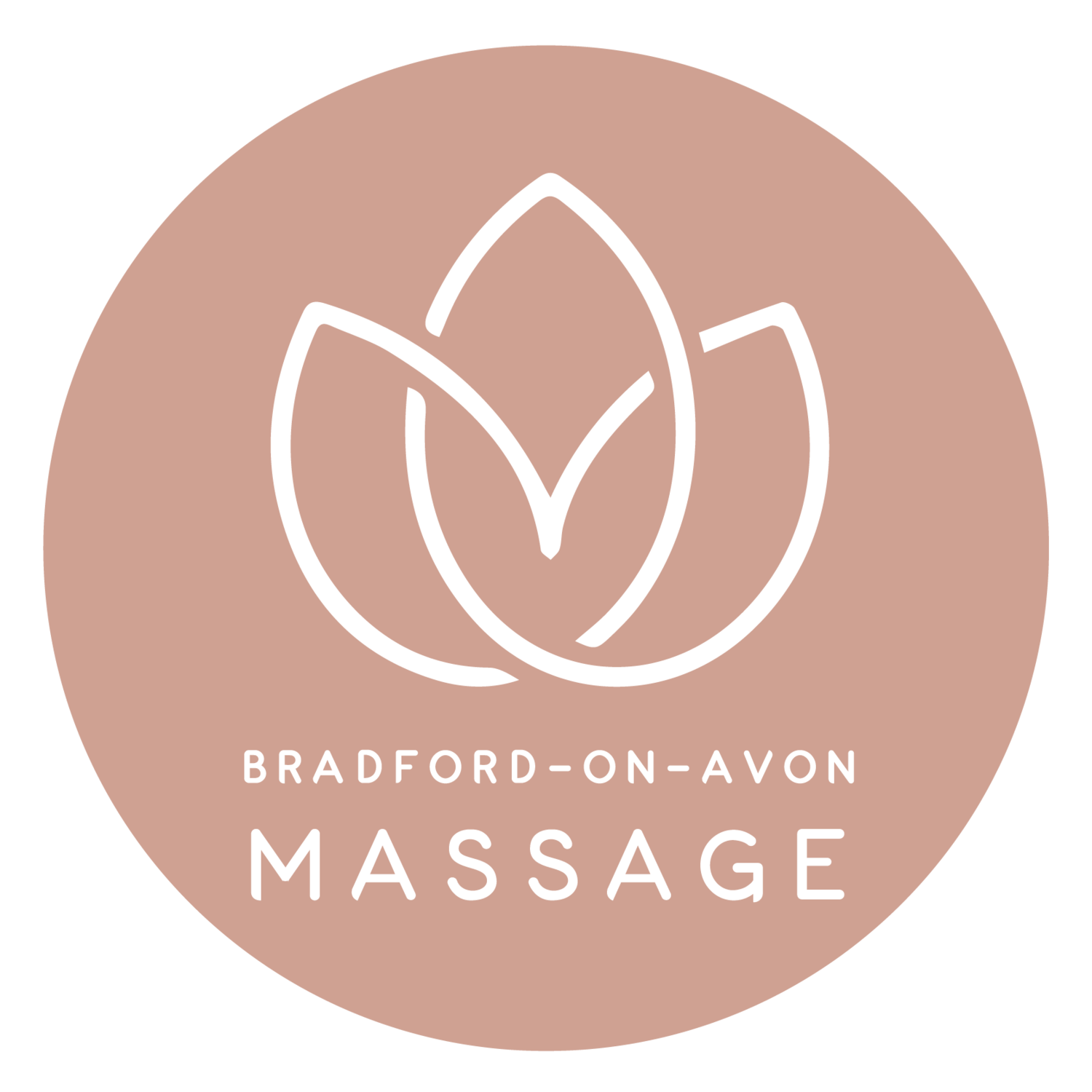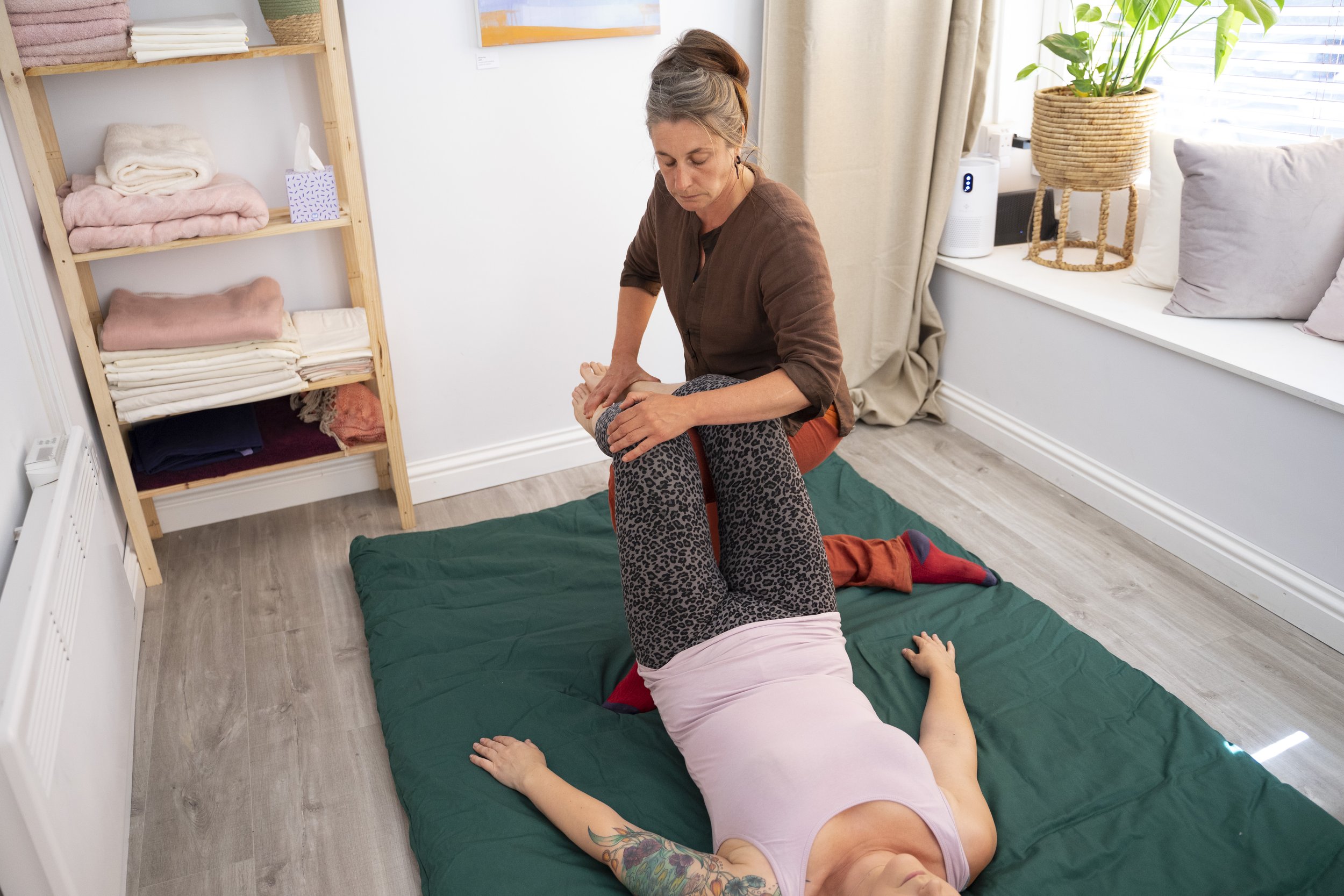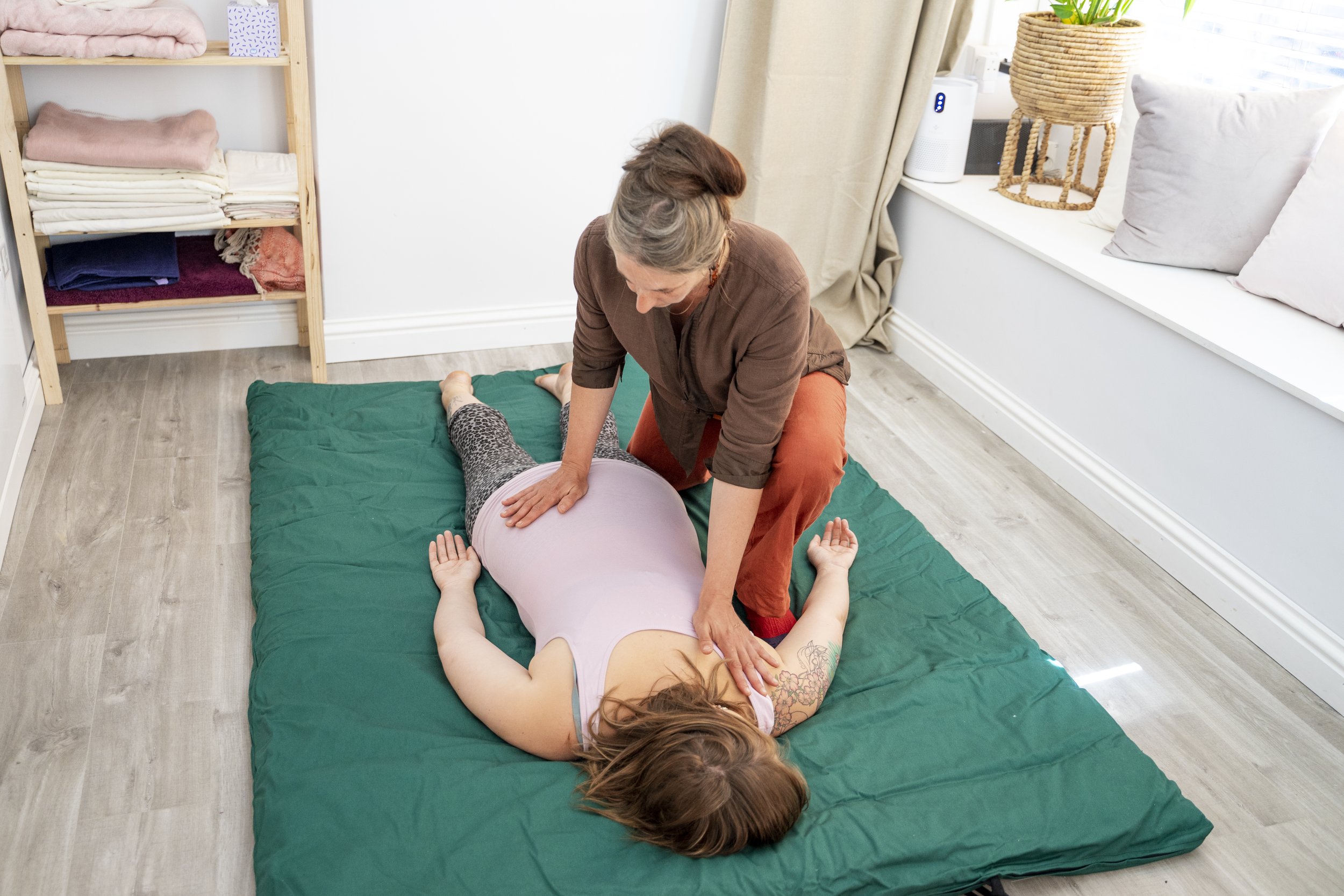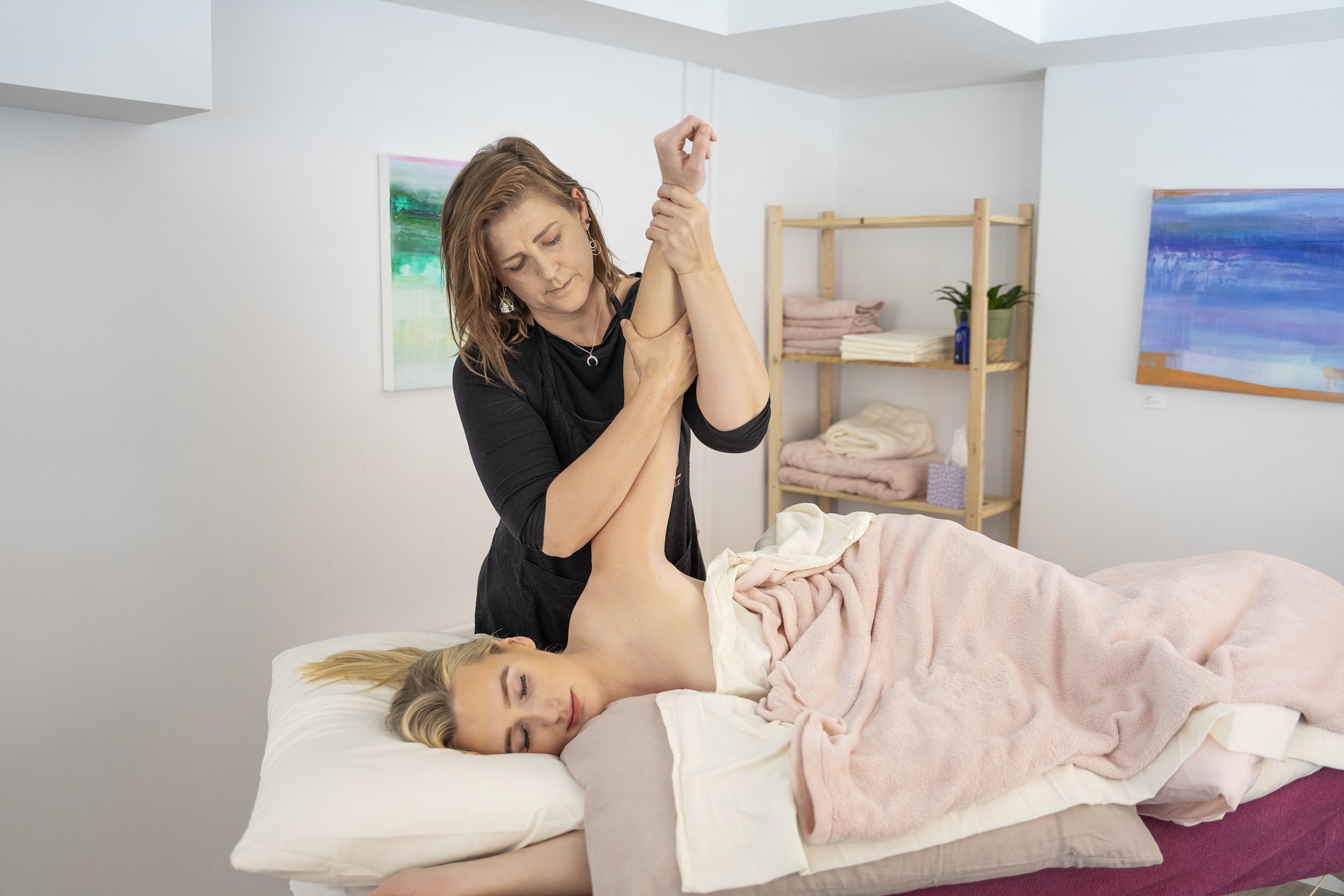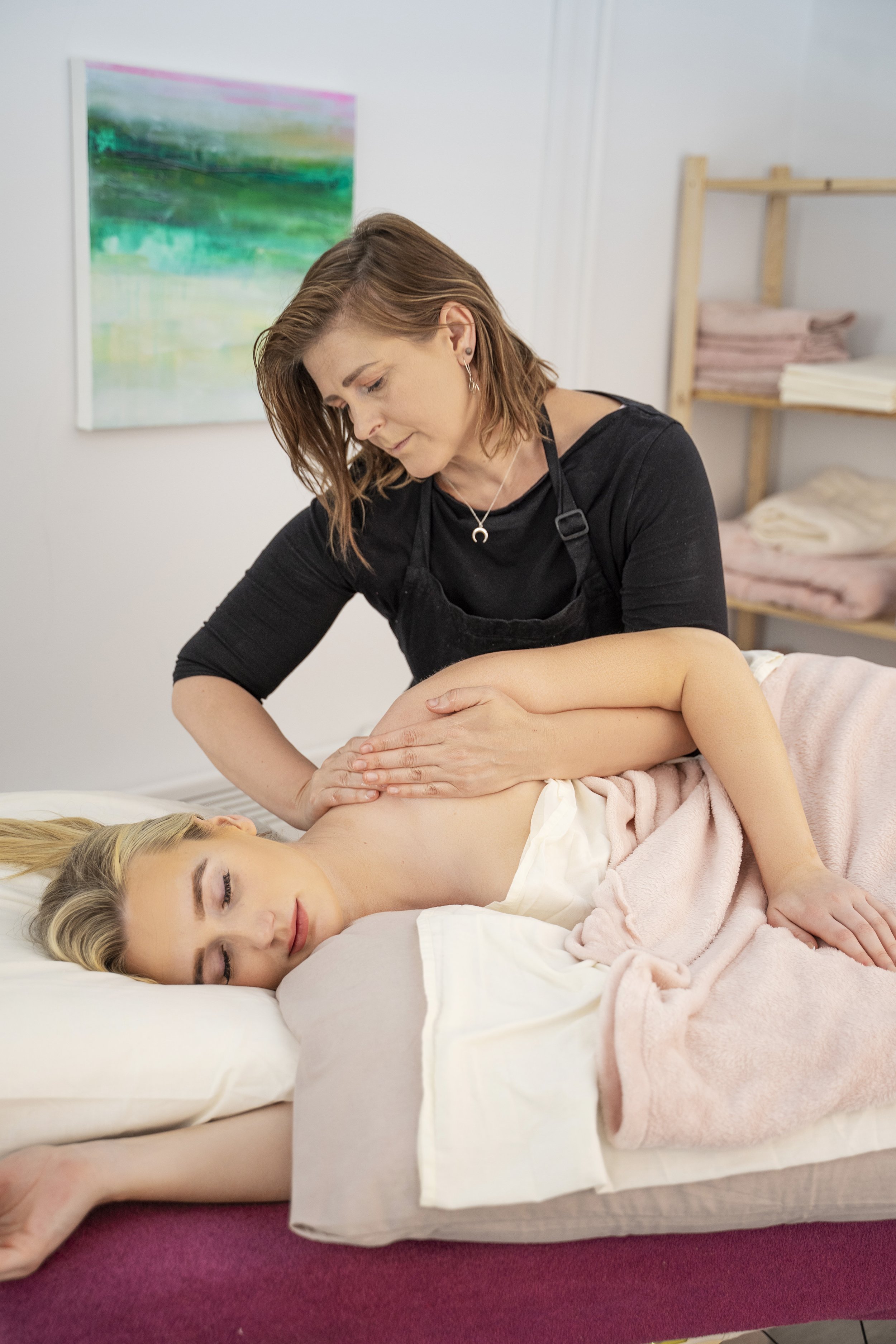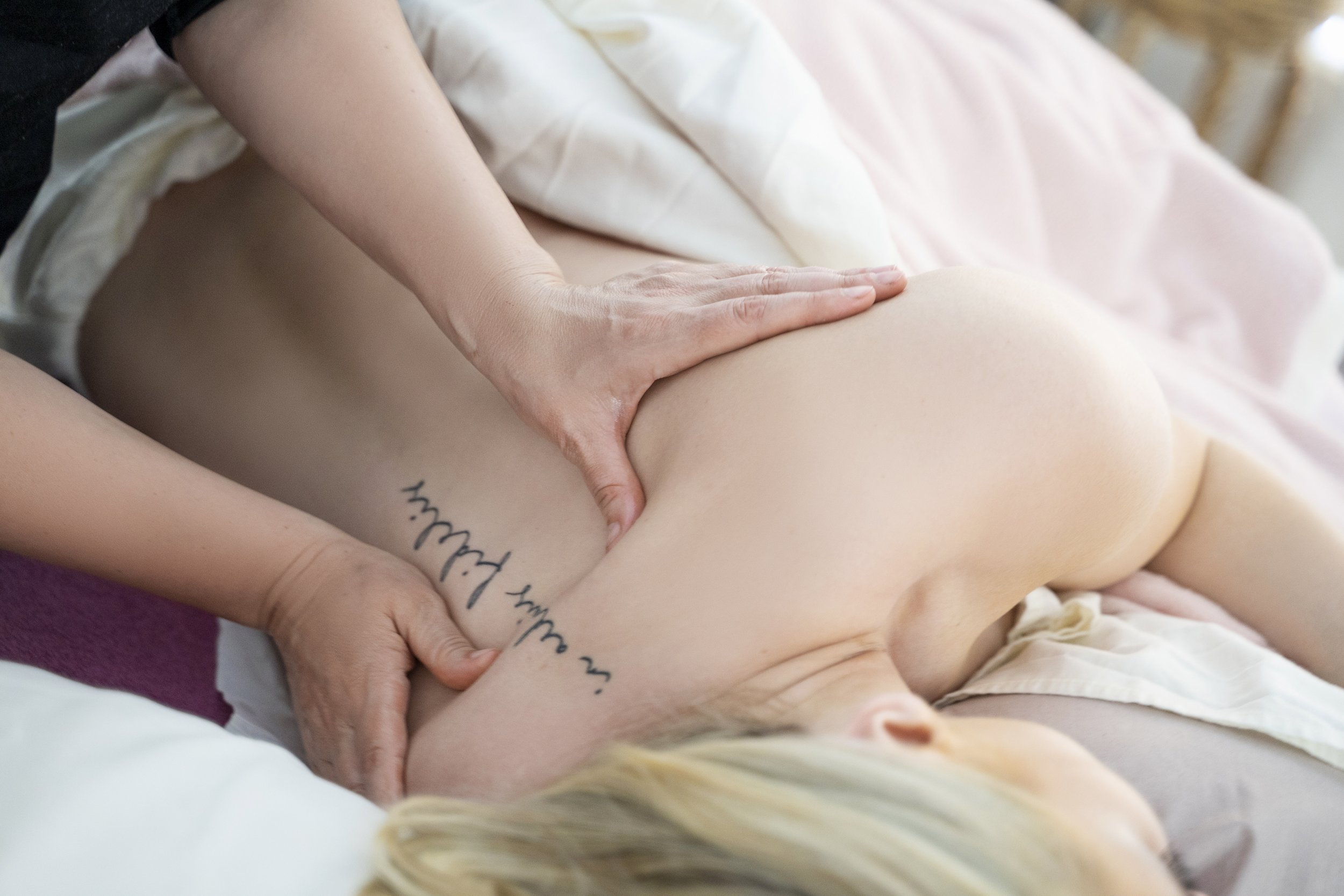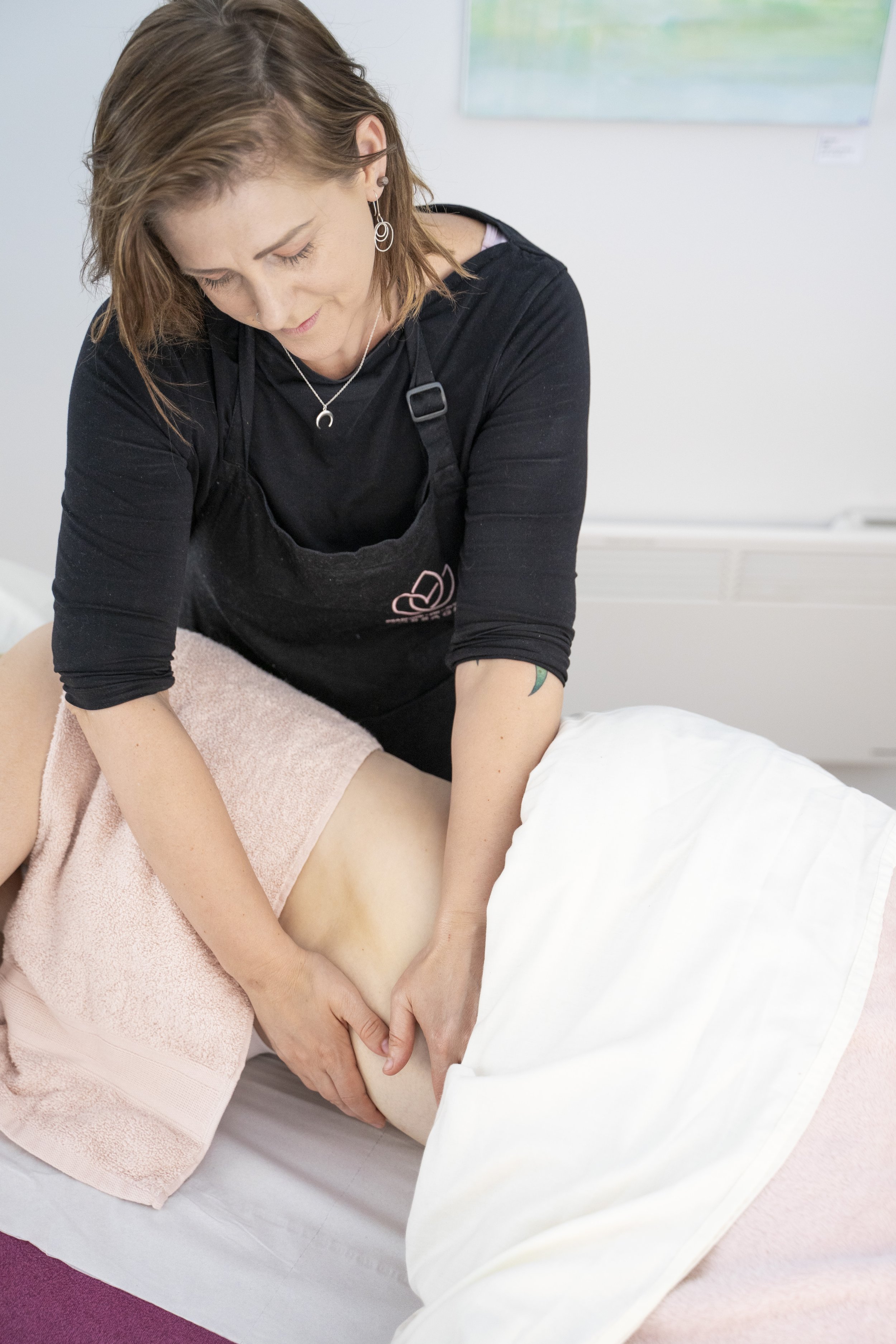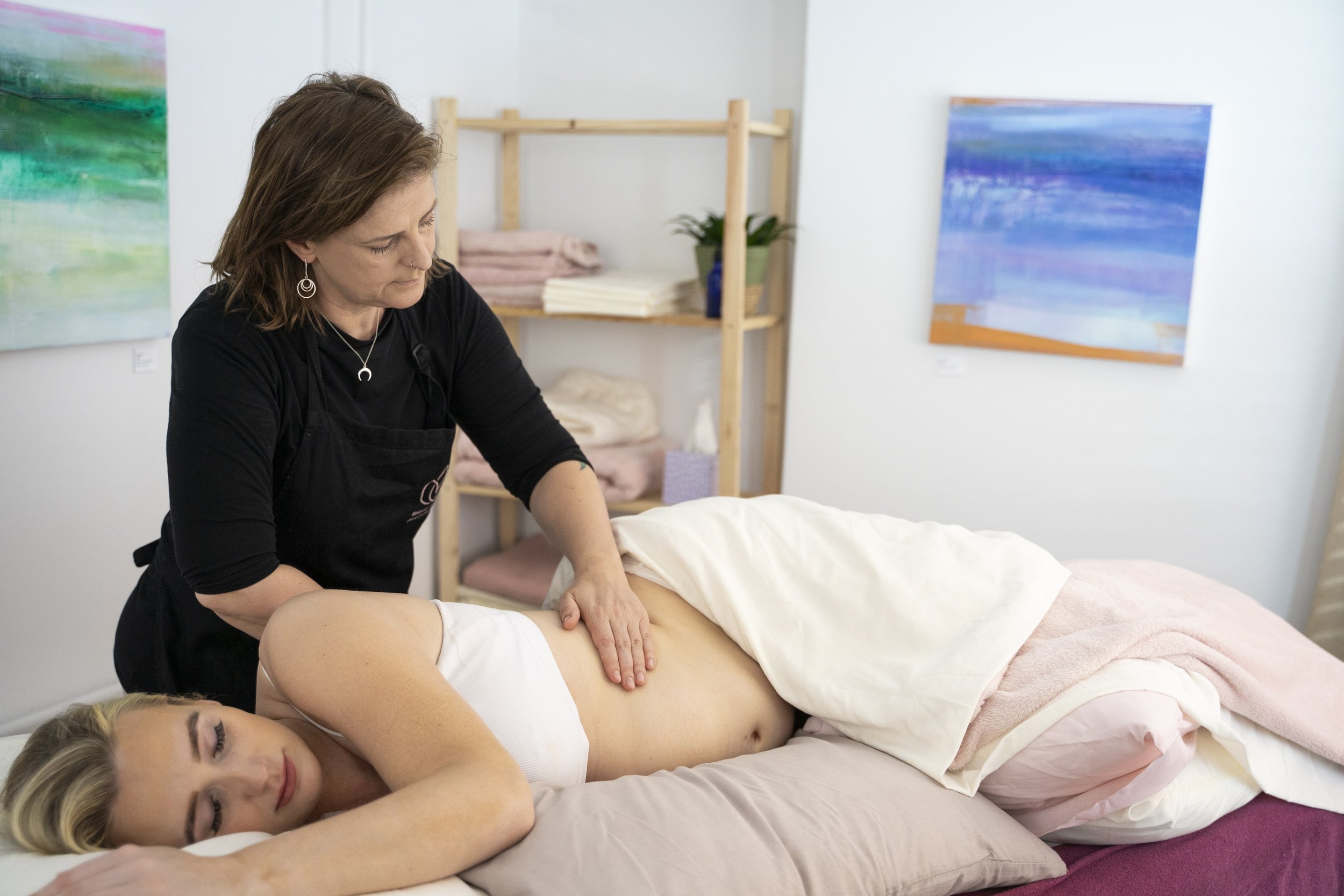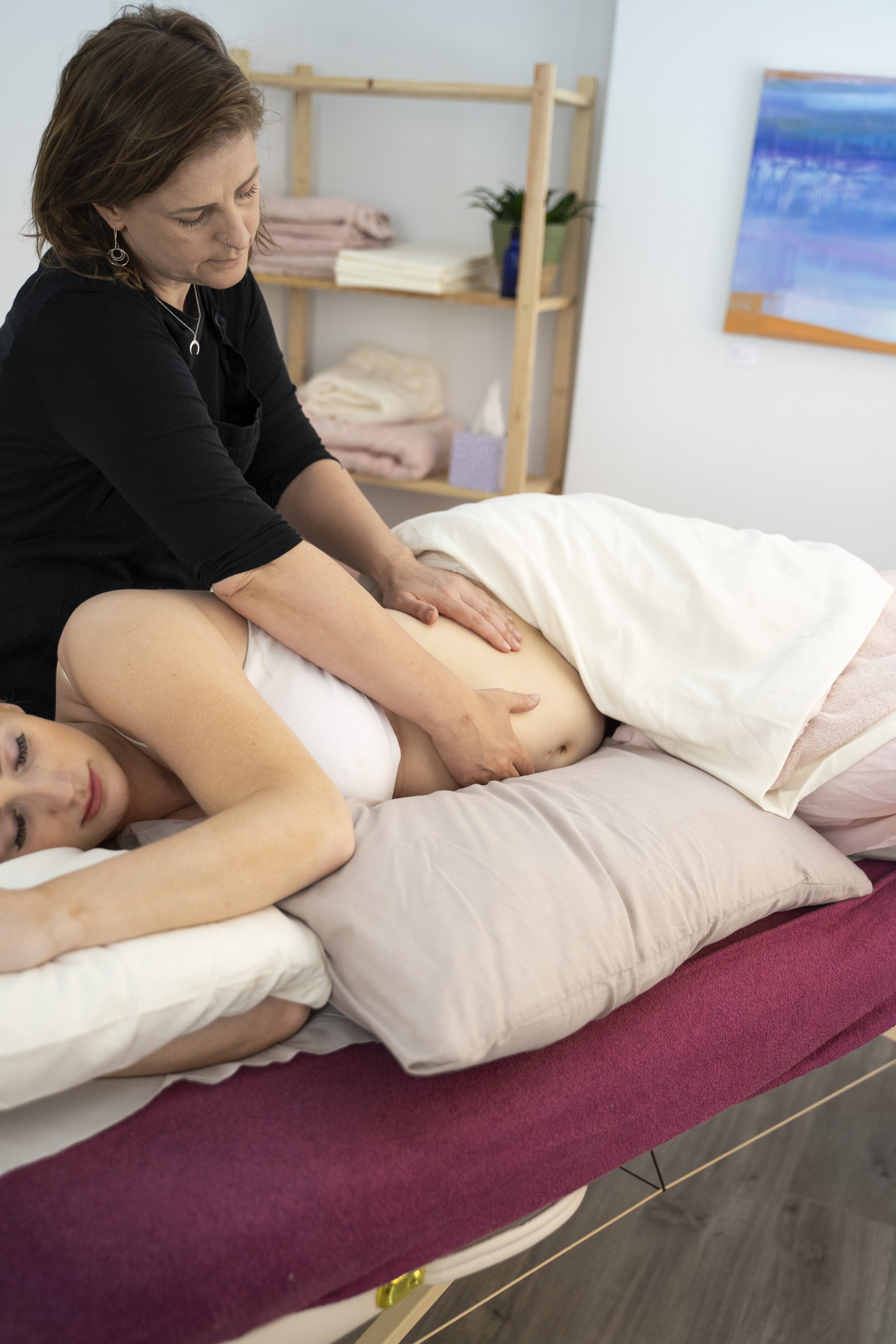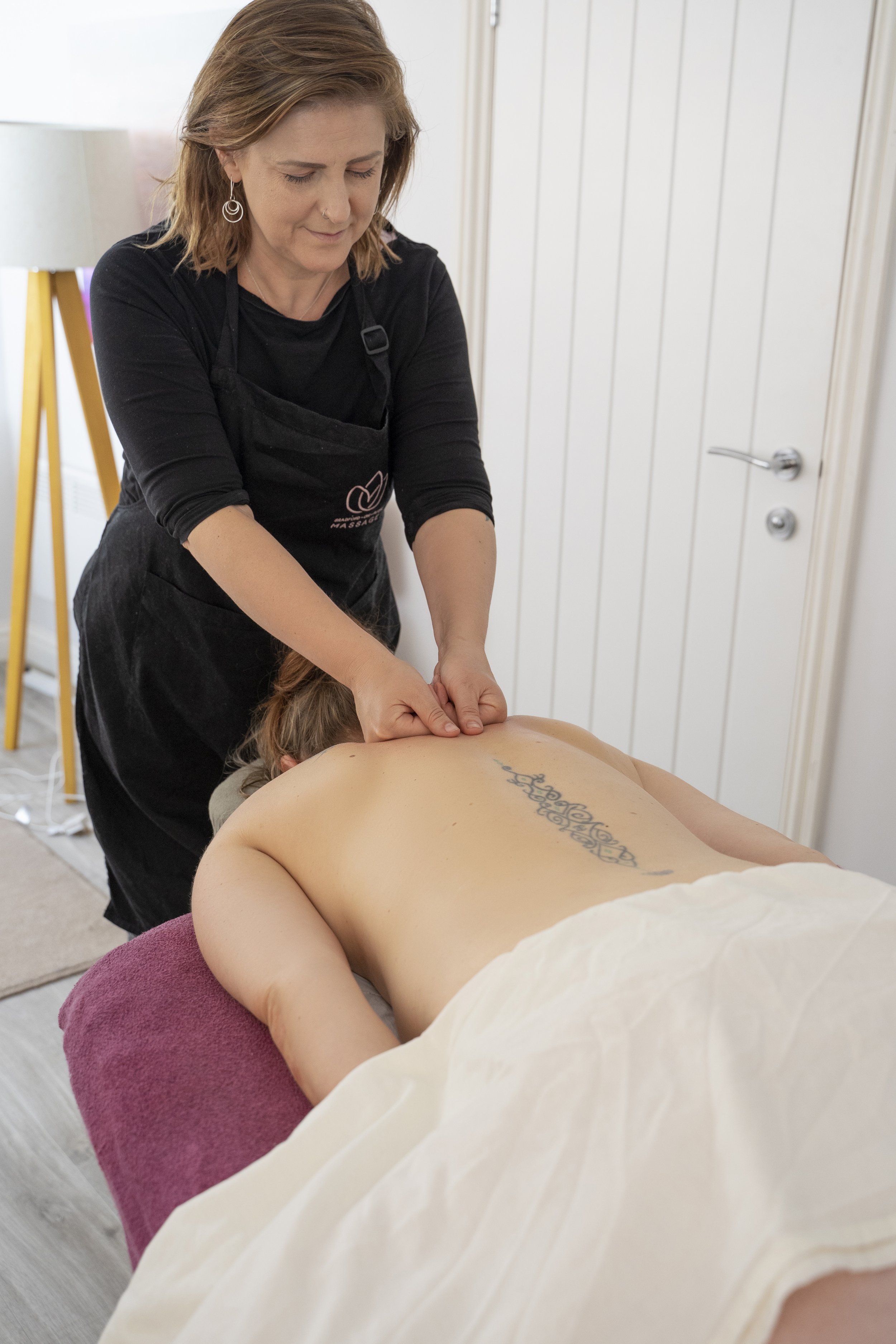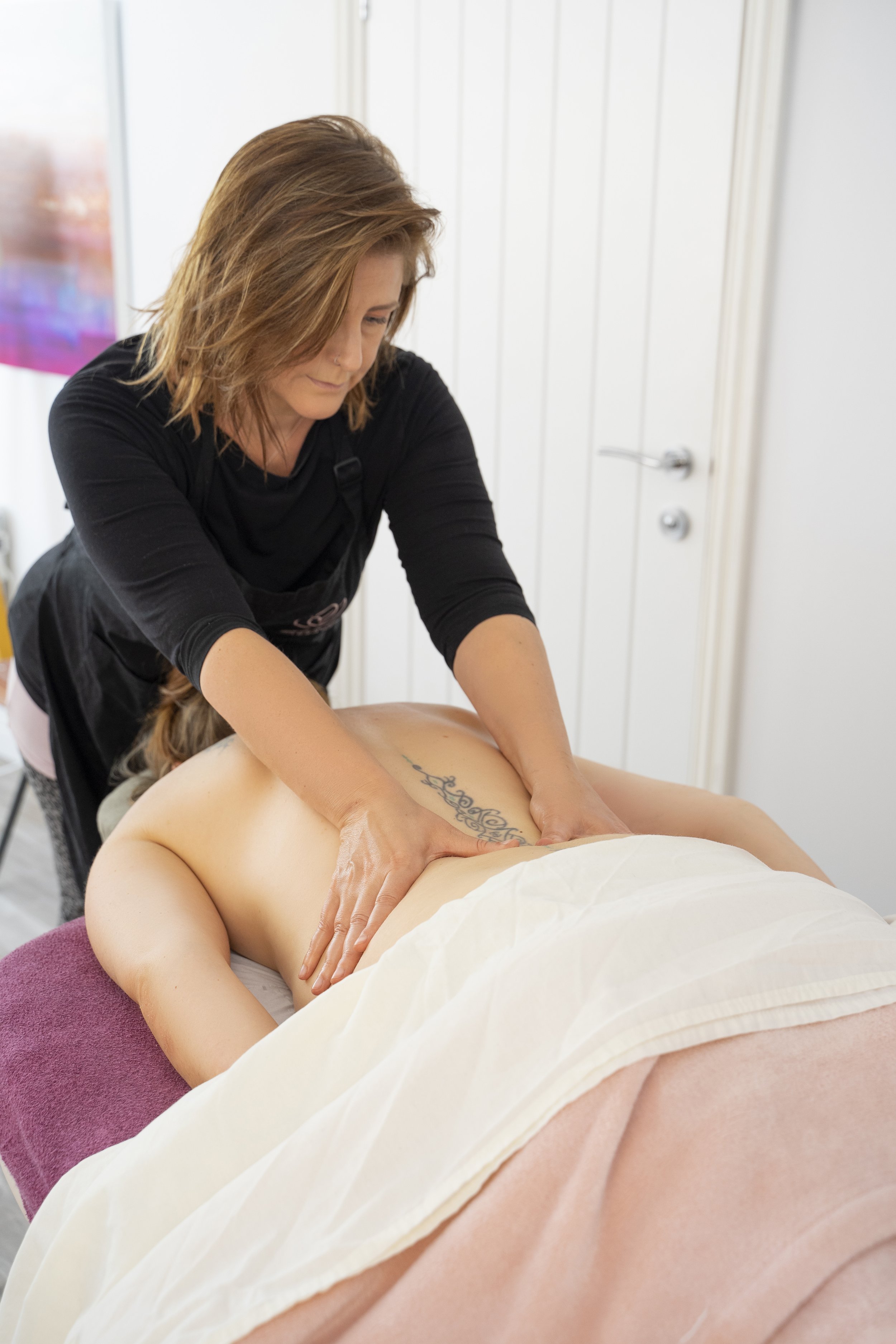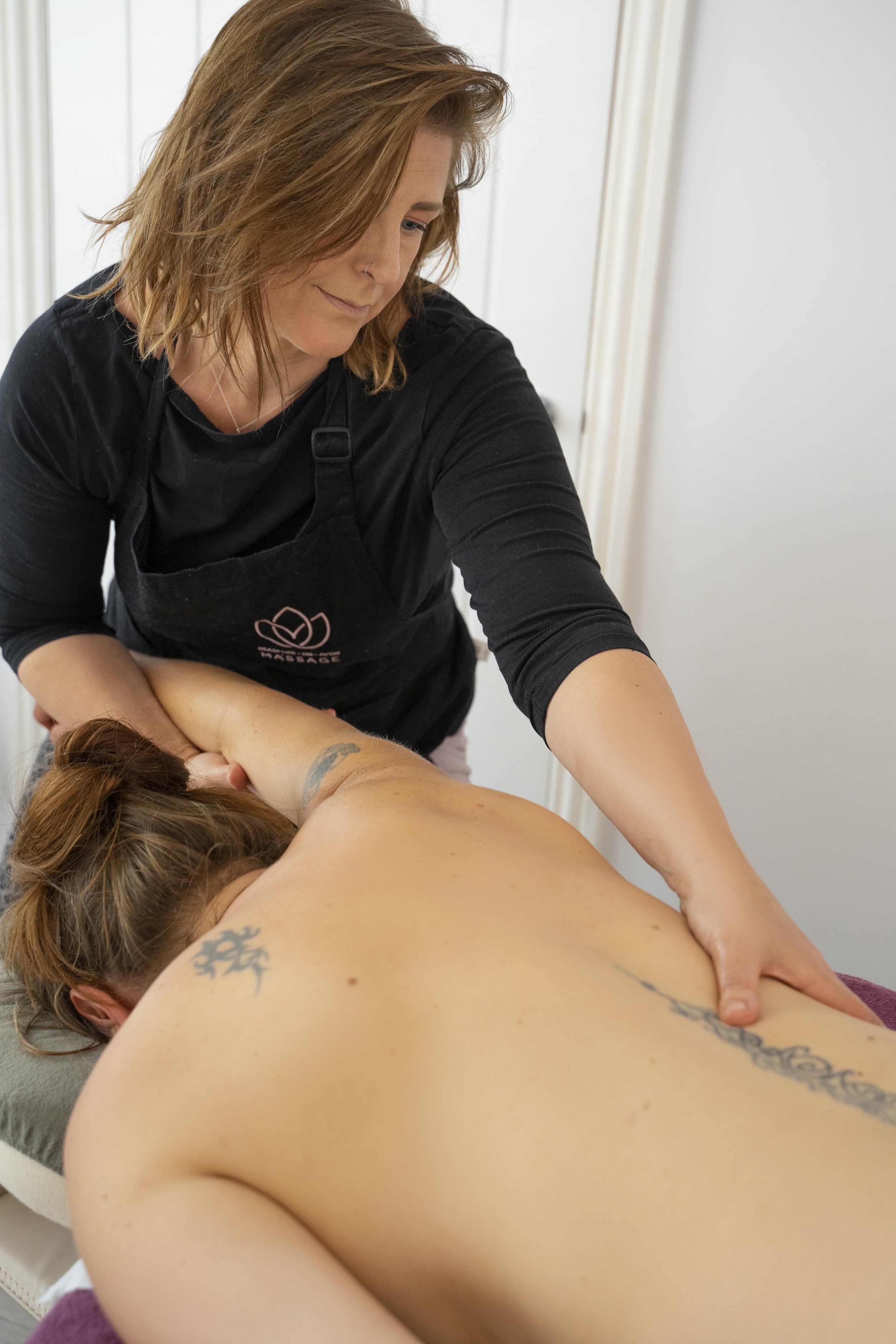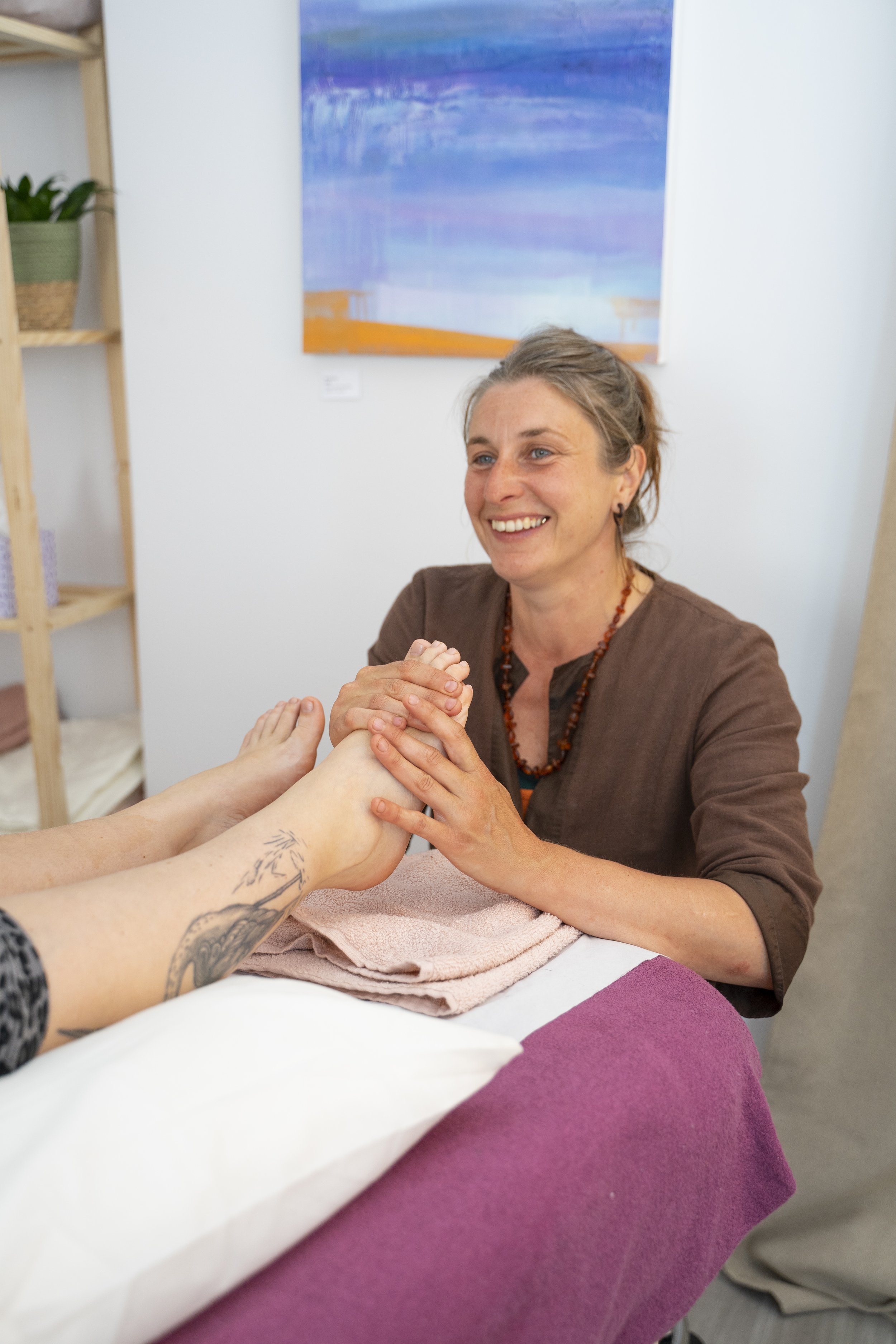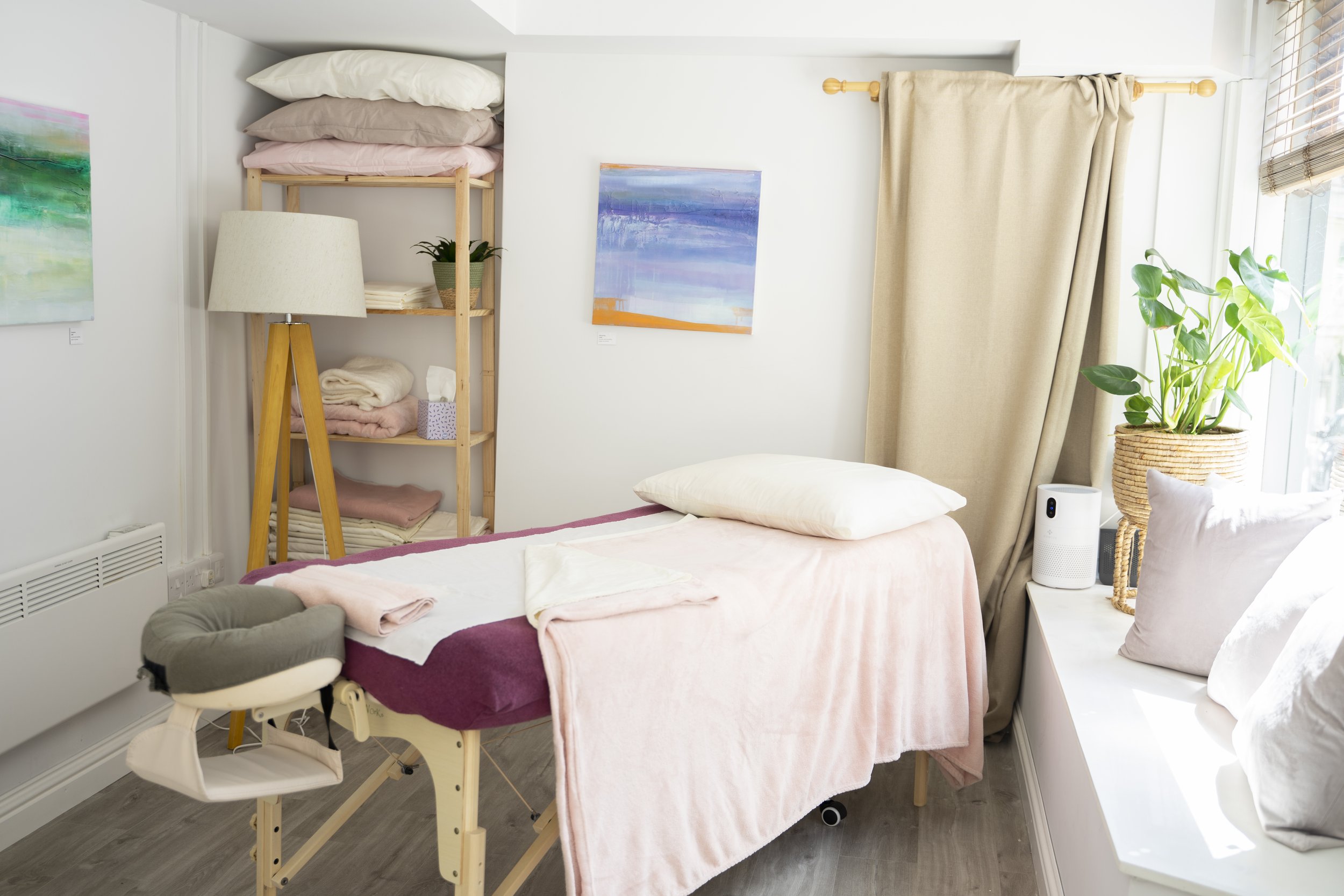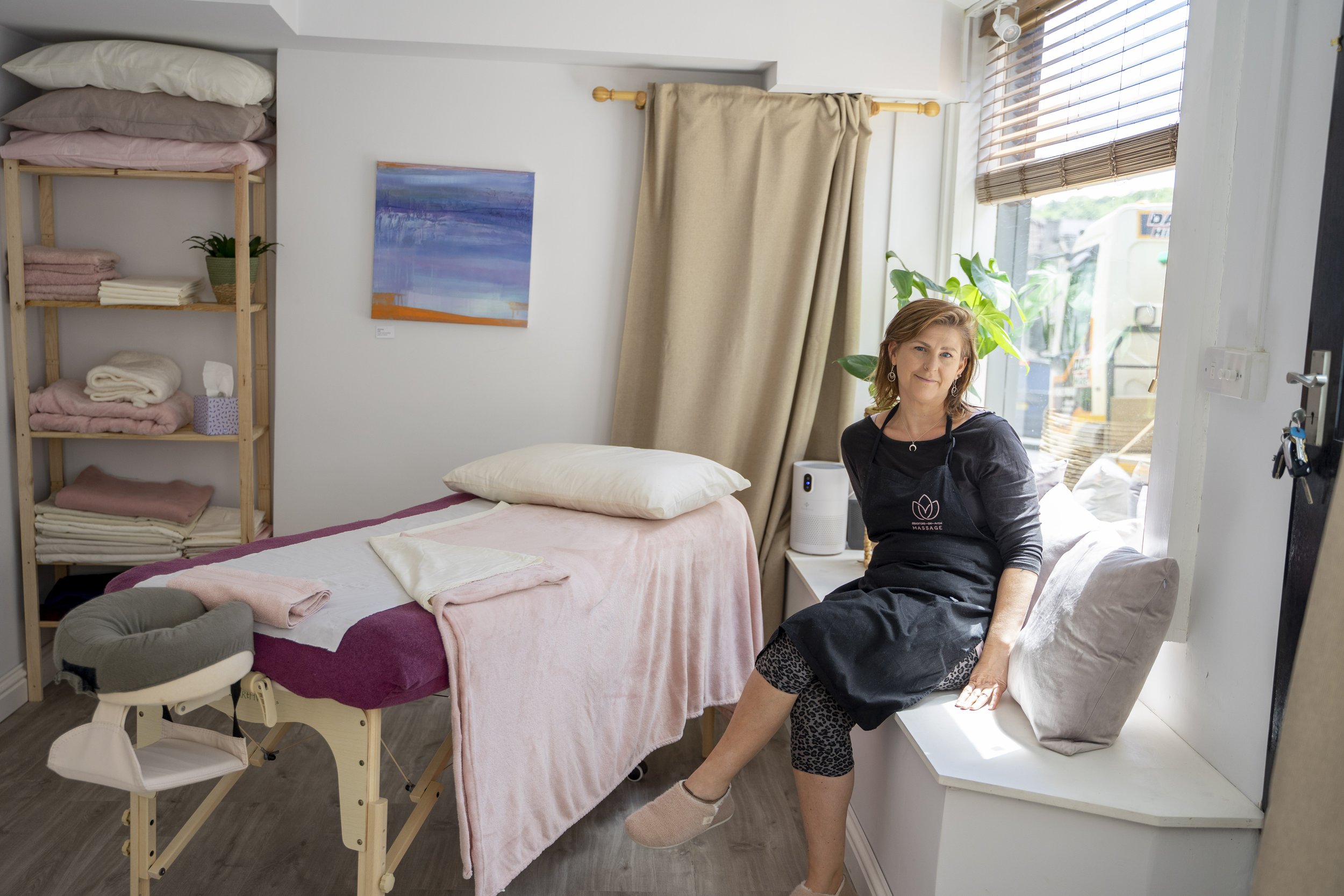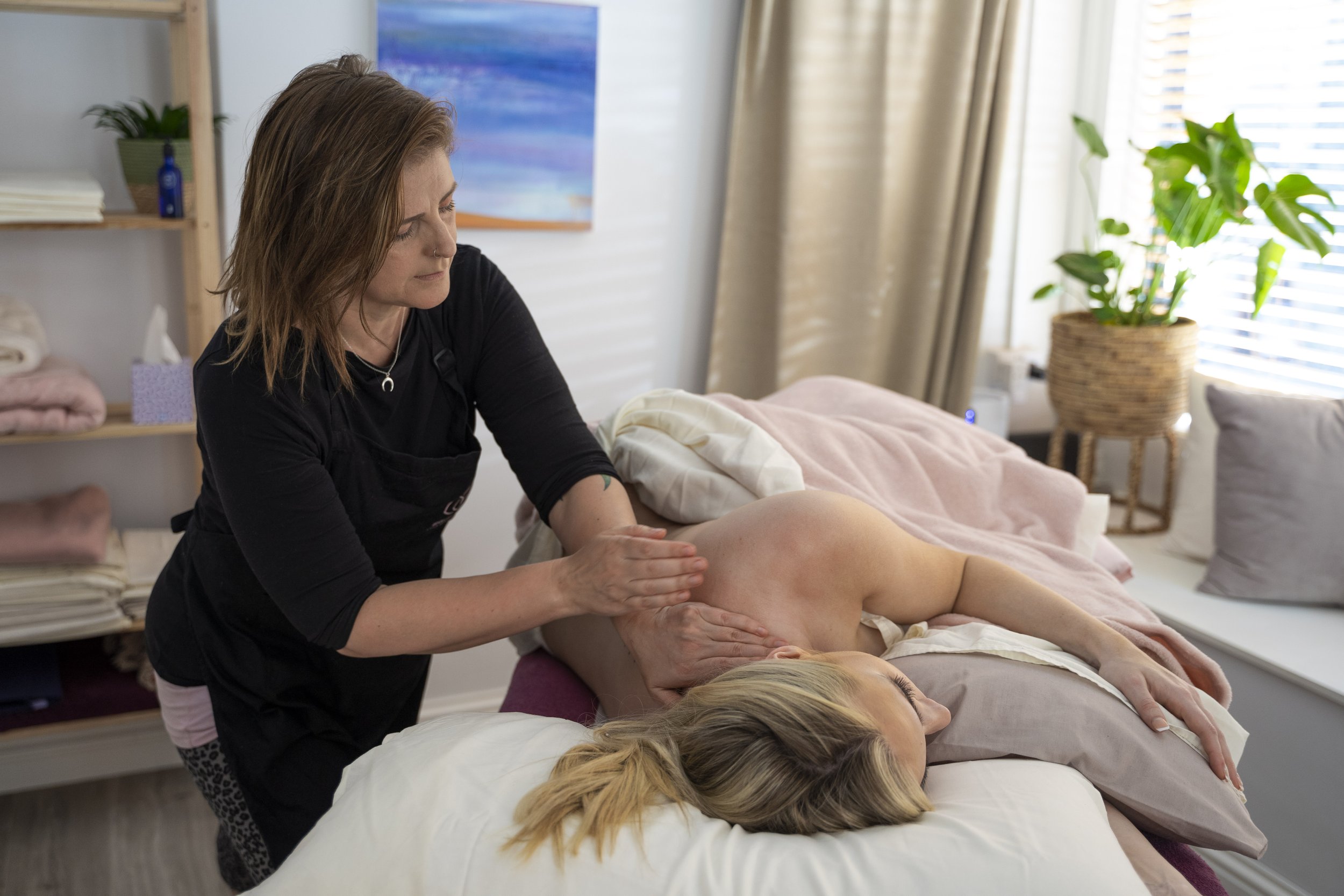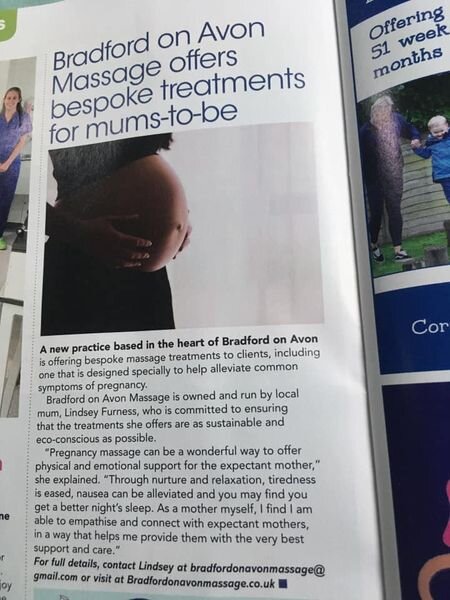I want to talk about C section scars and how we, as massage therapists, can work with them.
I have been treating women postnatally for a number of years now and I often use massage to help, with the abdominal scaring, post C section. Massage is a great way to soften and break down scar tissue and aid healing.
I’d like to post an article written by a colleague and friend of mine, Indre Cepliauskaite. She is a wonderfully talented practitioner at Bristol Massage Therapy.
Its a brilliantly written piece thats both informative and accessible, and far better than anything i could cobble together.
So with her permission, please take a quick look, for all you need to know, about abdominal scar massage and also some great self massage tips.
For most of this article I will refer to C-section scars, but please note that the process of massaging a scar is relevant for anywhere else on the body. Obviously the scar around a joint will feel a bit different to work on, but the body is still going through the same healing process.
(Note: Don’t worry, if you are squeamish we won’t be getting graphic or literal in this article)
LASTING VISUAL REMINDER
The human body is an amazing thing. Its ability to grow, to develop, to learn, to change, to adapt, but perhaps the two most incredible feats of the human body (and spirit) are the creation of life, and the way in which we form scars and how we heal.
Scars are a natural part of the body's healing process. A scar results from the biologic process of wound repair in the skin and other tissues. Most wounds, except for very minor ones, result in some degree of scarring.
https://www.webmd.com/skin-problems-and-treatments/scars
Most of us will have fallen over on our knees enough times and hard enough to have a scar to tell the tale (most likely when we were children). Then there are cuts from scissors, knives, broken glasses. It’s very rare to come across an adult who doesn’t have a scar or two, normally with a ‘war story’ to boot - these can be humorous, horrifying or downright daft.
HOW DO SCARS FORM?
When we have a wound that needs to heal, our body does something amazing … it lays down new protein fibres to knit the wound together. This protein is called collagen, the term coming from the Greek κόλλα (kólla), meaning "glue", and suffix -γέν, -gen, denoting "producing". Yep, I’m afraid that glue used to be an animal based product, but it is nevertheless the protein which helps us glue our wounds together. While these new fibers are regenerating, the uneven distribution of collagen cells is often chaotic and forms itself in a messy fashion. If left untreated, a thicker, more dense and fibrous tissue can form a scar tissue or so called adhesions. Unfortunately these can sometimes bind to nearby tissues and it can result in a pulling sensation or sometimes even a ‘trapped', restrictive feeling. Adhesions can also be a source of digestive / bowel problems, incontinence, lower back pain and sometimes even infertility. It is estimated that 93% of people develop adhesions in response to the trauma of abdominal surgery.
Once we are ‘healed’ there is a visual reminder in the form of a scar. There are four stages of wound healing: hemostasis, inflammation, proliferation and maturation. In brief:
Inflammatory phase
This is when the blood vessels leak something called transudate which is made of water, salt and protein) and causes localised swelling, which both controls bleeding and prevents further infection. I’m pretty sure this is what we refer to as the wound ‘weeping’ or pus.
Proliferative phase
This is when the wound is rebuilt with new tissue made up of collagen and extracellular matrix, it’s also when things start to feel a bit tight and pucker up a little because the wound contracts as the new tissues are built and pulls things together. Perhaps the most important aspect of this phase is the laying down of new blood vessels so that the new tissue can be healthy and receive the oxygen and nutrients required.
Maturation phase (aka remodeling stage)
This is when the wound fully closes, and the ‘repair’ cells are no longer needed.
The primary aim of scar massage is to promote the alignment of collagen fibres (‘break’ the adhesions and help them to form in a ‘less messy’ way) which are laid down as part of the healing process and also the development of more supple scar tissue which will allow for movement. This benefit will not be as visibly obvious as the texture and the appearance of the actual scar, but will certainly be a ‘felt’ benefit as these adhesions are ‘tidied up’.
HOW CAN MASSAGE HELP WITH SCARS?
For the purposes of this article in relation to massage, it’s important to understand that there are two key phases … the immature and the mature. Or the messy teenage and the tidy grown up!
During the proliferative (or ‘messy teenage / immature’) phase, collagen is laid down any which way so that the wound can be stitched together. Want a visual analogy? Think a disorganised spider’s web or a knot of hair after a restless night’s sleep. The scar has just initially formed and healed together, and can be itchy, painful or sensitive as the nerve endings within the tissue heal. While the scar will look red initially, due to the good level of circulation to the area, and it may feel uneven in texture.
In terms of massage, during this initial immature phase, it is best to work around the scar, focusing on the tissues immediately above and below it. As the scar becomes less sensitive you can start massaging the scar itself.
It is only when scar tissue is no longer being produced that the scar is considered mature. This is when the thick layers of collagen are organised and become aligned along tension lines, they lie close together and the thickness of the scar reduces. To go back to the analogies the spider’s web becomes more organised, the bird’s nest hair is brushed out into fine looking tresses. The excess levels of circulation which have aided the healing process are no longer required so the colour of the scar will reduce to a paler colour in appearance. This is what is meant by the maturation (or ‘tidy / grown up’) phase.
At this point, massaging is still beneficial but requires a more disciplined approach. Remember, it is never too late!
It is perhaps important to note that whilst massage can help in the manner in which scars develop and heal it will NOT prevent them from being visible. It is highly unlikely that, even with the most wonderful topical cream / oil / massage technique surgical scars will disappear all together. What is perhaps more important to understand are the lasting benefits that massage can help with beneath the scar.
BELOW THE SURFACE
If you have had a c-section and are wondering just what your body is recovering from, there is a wonderful YouTube video which uses a demonstration of felt layers to highlight the anatomy of a Cesarean Section. It is not graphic or gruesome.
Anatomy of a C-section. Just to give you a visual of the different layers that are cut to bring baby earth side. Most cesarean births result in healthy babies and mothers. But a C-section is a major surgery and carries risks. Healing also takes longer than with a vaginal birth.
However, for those feeling a little less adventurous, let me outline the layers that a Cesarean Section cuts through.
Initial cuts (and the visible scar) are horizontal through:
Then the incisions are made vertically through:
Until you reach the baby.
You see, it’s really important to remember that whilst all we see as a lasting reminder of the Cesarean Section might be the most superficial incision at the skin level, it is really an elaborate corset of suturing, enabling all these layers to knit back together and heal. So it is not just the most superficial scar that needs to be included in the massage.
POST C-SECTION MASSAGE
The post c-section massage can help the scar to heal nicely with good mobility and improve function of the abdominal muscles. Scar massage can even prevent excessive scarring and make the scar appear less noticeable (remember, not invisible!). The benefits can not be overstated!
Unfortunately, most of the women are only advised to monitor the outside appearance of their scar, checking for signs of infection. Just very few primary care providers advise or show how to massage their scars and / or tell why this is beneficial, leaving women to suffer, sometimes for years, in discomfort or even pain.
WHEN TO BEGIN MASSAGING A C-SECTION SCAR?
It is important to remember that each mother is different therefore the healing process is very individual. The progress also depends on the degree of trauma she has suffered and the skill of the person carrying out the suturing. As a general guideline, it will take approximately 6-8 weeks for an incision to heal.
Once you get the “green light” from your primary care provider begin with a gentle massage daily to breaks down adhesions, eliminate pain and restore normal tissue functioning. Also note, whether it has been months or even years since your c-section, it's never too late to achieve improvements.
WHAT IS THE BEST WAY TO MASSAGE C-SECTION SCAR?
There are two ways in which scars can be massaged, and for each of these there are a couple of techniques. Before we get to the ‘how to’, let me explain a little more about each of these:
‘Energetic’ massage
This is perhaps a little more ‘out there’ for some people, whilst others will fully subscribe to this manner of work. Basically I am talking here with a more ‘Eastern’ approach subscribed to my Shiatsu Therapy, acupuncture, reiki and the like. I am not discussing energy work in depth here, but I am providing this information as some women have found this type of work to be incredibly beneficial as the Eastern philosophies of body & energy work see scars as creating a physical block to the flow of energy (or Chi) in the body.
You can also use the energetic massage techniques with intention or visualisation if the thought of ‘energy’ or Chi is not something you are comfortable with. A lot of women are aware of the incredible benefits of visualisation in terms of labour and birth … but it doesn’t have to be limited to these times!
Physical massage
This is perhaps what most people will think of as massage … fingertips on, feeling for sensations, the application of ‘pressure’, with small, intricate movements.You can massage around the scar & directly on the scar itself. You can work on the skin (more superficial layer) or sink in slightly deeper with the fingertips.
I am including both these forms of massage because to my mind they will both provide some benefit. The energetic might only enable a woman to reconnect and acknowledge what her body went through, the positives and the negatives of the circumstances around the c-section.
Please note that it shouldn't be painful or uncomfortable in any way. Pain is a signal to stop!
When you work respectfully with the tissues they respond by relaxing and releasing.
Energy holds
You can start with holding the palm a short distance off the body over the scar or cupping the palm over the scar so no physical contact is made, while visualising the scar healing, and the tissue knitting together. Gently place your palms directly on the scar or just above and below with the focus of allowing energy to flow. You can hold here for just a few breaths or a few minutes
Holding the edges of a scar
Place your finger tips on the edges of the scar, try to feel the difference, often women find one end of the scar is more restricted than the other side.
Gently moving you fingertips along the incision (side to side)
Start from the right side of your scar and gently run your 3 middle fingers from the right side, all the way through to the left side of the scar. Then gently go across the incision line from the left side, all the way to the other end. Take your time, see how mobile the tissue is, notice how in some of the areas you might feel the tightness, pulling of the tissue sensation (may feel more congested) while in others – weakness.
If you don't feel comfortable working directly on the incision, you can work just above or below the scar all the way across your abdomen.
Passive stretching (working with the areas that feel more congested and / or weaker)
Once you find the areas that do not move freely (feel congested), gently press into the tissue until you feel the tissue releasing or softening. It feels like butter melting under your fingertips.
You can also stretch the scar by gently pulling / drawing with your fingertips in the opposite direction (as indicated by arrows). Move along the scar and repeat the scar stretch over the congested areas of the incision.
While working with less congested areas, that might feel weaker along the incision (in Shiatsu it might be referred to an 'empty' energy) - place your fingers just above and below the incision and gently move the tissue towards the scar (as indicated by arrows). In Shiatsu the focus is on bringing the energy back into the weak area.
Spiral movements
Again, you can work either on the scar itself or just above and below. Gently move the tissue under your finger tips in spiral movements. If it feels appropriate, try to sink in slightly deeper, you could even visualise dropping down through a couple of the layers of the incision if you felt comfortable enough. For this part, you can use an oil rich in Vitamin E. Rosehip oil is amazing for c-section massage, since it is very nourishing, improves skin texture and tone - it is also said to be great for stretch marks!
Spend more time working in the direction of resistance till you feel a gentle stretching in the tissue. Hold it there until you feel a release. If you work respectfully with your scar, rather than forcing, encouraging the tissue to have more freedom of movement, you can attain that release. Avoid forcing, as the tissue may fight back and won't release.
HOW LONG DO I NEED TO CONTINUE SCAR MASSAGING?
Initially, massage regularly until your scar tissues are freely moving in all directions. Effectively this means about 5 minutes each day if you can. Once you’ve achieved that mobility, you will want to check in with the area every so often, perhaps once a week or even once a month. If you find that the tissues getting tight again return to a more regular massaging routine.
WHAT IF I DON’T LIKE TOUCHING MY SCAR?
It is easy to forget that the events around the birth of a child are also the events that see the birth (or rebirth if this isn’t the first child) of a mother. Whether the c-section was elective or emergency, whether it was ‘simple’ or highly complex, the scar can become a lasting visual reminder of what happened.
Some women might not feel comfortable working on their scar (or sometimes even looking at it). This is not about vanity, this is more often than not related to the physical, mental and emotional trauma surrounding the scar. Whether a planned elective or emergency c-section, this is major surgery to our soft underbelly where as humans we are most vulnerable. Add into the mix that all being well there is a healthy baby added to the family, and the energy and focus required to recover from such a surgery is somehow depleted! It is also possible that some women associate the scar with their perception of her skills and abilities as a mother. Her capability or otherwise.
Massage, connecting with the scar and the surrounding area, mentally revisiting the circumstances surrounding its addition to a woman’s body, can be emotional. Occasionally it can actually be a trigger.
For many women, especially if the surgery wasn’t planned, c-section was a traumatic experience. When anything occurs to us that is outside of our control and / or too overwhelming to deal with, there is a tendency for us to disconnect from ourselves. This disconnect is a natural part of a trauma response. Being unable to touch or even look at your scar are indicators that you might be dealing with trauma in your body. In this case, it is highly recommended to seek professional help, someone trained in trauma release work, to assist you in letting go of your trauma so you can reconnect to and take care of yourself.
http://www.pelvichealthphysio.co.nz/For-Women/Pregnancy-Exercise-Advice/Massaging-Your-Surgical-Scar
This kind of response is perfectly ok. It doesn’t mean you can’t massage your scar, or that you will never receive the benefits of scar massage. It is just more important to find the right way in which to support this work. That might be having a post natal massage appointment and discussing it with the practitioner, or it might be to do as the above quote suggests and talk through the trauma first with a qualified and trained professional.
IS IT TOO LATE FOR ME TO MASSAGE MY SCAR?
Whether your c-section scar is new, several months, or years old, massage can help you avoid problems down the road. Remember, it’s never too late!
C-section scars it can take up to two years for the scar tissue to fully form, but the internal benefits of massage, of adhesion removal, of freeing up the layers of tissue to move more freely and independently, will still be achievable. It may sound like a lot of work but spending just five minutes a day can do great things in releasing scar tissue and increasing mobility in your lower abdomen. Caring for yourself is important too!
However if you feel that there is no improvement after scar massage or you continue to have pain and weakness in the area, see your primary care provider or pelvic physical therapist who can help.
